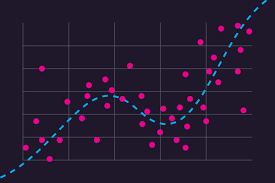
Principal speaker
Associate Professor Sama Low-Choy
Many data analytic procedures, from classical statistics or machine learning, rely on analysis of a single dataset. Reproducibility concerns have encouraged researchers to aim for very large data. However, researchers may at times wish to explicitly build on previous information, by analysing small-moderate datasets that are well-targeted to cover gaps in previous knowledge. Here we describe how a Bayesian statistical framework can be set up to transparently include information from previous studies, and in this way, accumulate knowledge. For instance, when your work is pioneering or time-constrained, you may wish to start with what the experts say initially, then update this with whatever limited data is available. Alternatively, you may wish to see how new data modifies previous findings summarised as a meta-analysis. Another common option is to plead ignorance a priori and adopt a non-informative prior. Bayesian prior models codify what is known a priori, that is, before the new data has been analysed. So, at its simplest, a prior model may reflect plausible bounds on effect sizes, or even a complete lack of prior knowledge.
This session introduces you to Bayesian inference, which focuses on how the data has changed estimates of model parameters (including effect sizes). This contrasts with a more traditional statistical focus on "significance" (how likely the data are when there is no effect) or on accepting/rejecting a null hypothesis (that an effect size is exactly zero). It also contrasts with a machine learning approach, which focuses on predictive performance.
Part 1: Formulating priors for Bayesian regression. In this workshop, we revisit regression from a modelling perspective in a way that clarifies what effect sizes mean, so that you are better positioned to formulate your prior model. We show examples of how to identify and utilise relevant prior information from previous studies and/or experts. We cover a six-step process for designing elicitation of prior information.
Part 2: Using priors in Bayesian regression. We continue to work with the examples from Part 1, by walking through the process of incorporating priors (already constructed) within a Bayesian analysis. Different options for prior models are supported by various packages; we show examples in JASP and R. Prior sensitivity analysis is covered as a mandatory component of Bayesian analysis, to show how prior choices affect posterior findings.
Software: Please download and install the freely available JASP software.
Level: Researchers of all backgrounds, with an interest in the meaning of effect sizes in regression models, and in how Bayesian statistical modelling works.
Related RED workshops: Eliciting effect sizes from experts focuses on constructing prior models from expert knowledge. Regression techniques are addressed in topics on model-based regression and Bayesian regression. A non-mathematical introduction was delivered in the "Bayes for Babies" workshop which refers to Chris Ferrie's boardbook "Bayesian for Babies".
Recommended Readings: You may get more out of the session with a little prior reading to identify your "sticking points" on priors. A week before the workshop we will invite you to share brief comments (a sentence) on 1 or 2 readings about priors.
This event is open to Griffith University staff and students only.
Event categories
RSVP
RSVP on or before Sunday 10 March 2024 14.01 pm, by email red@griffith.edu.au , or via https://events.griffith.edu.au/3OMKQQ